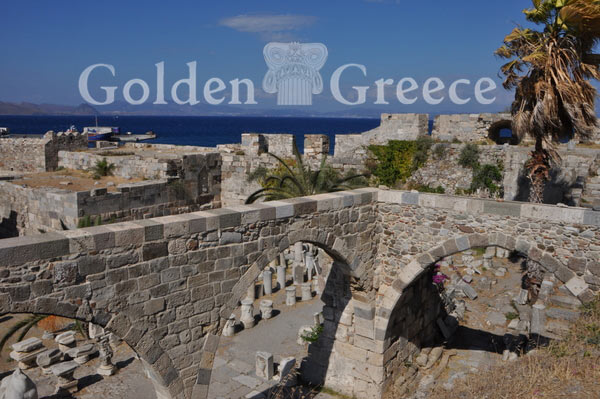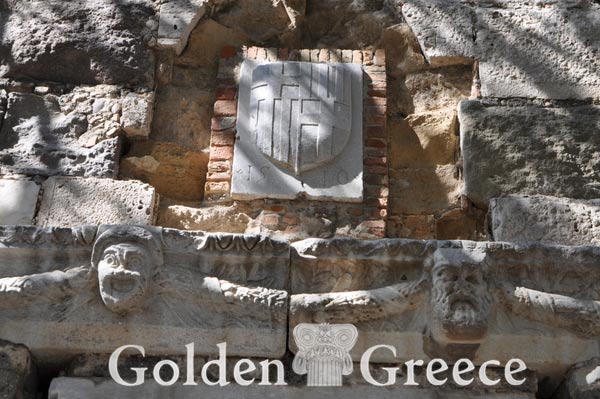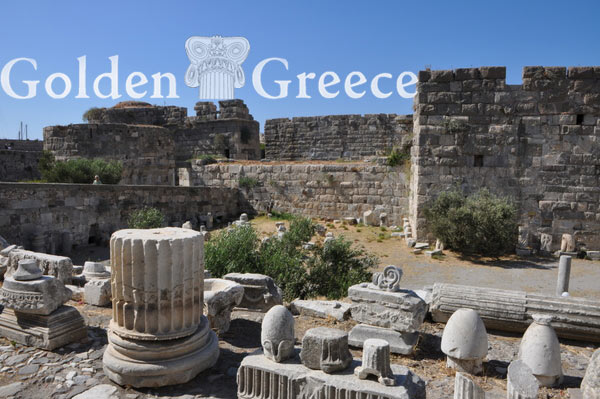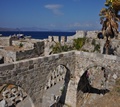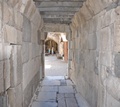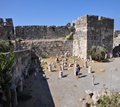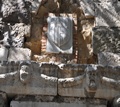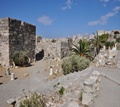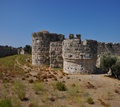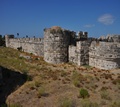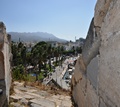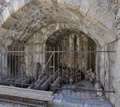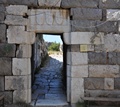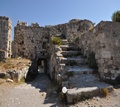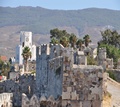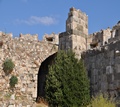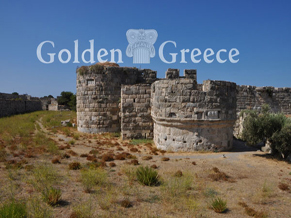
During the medieval period, part of the city, the "Chora", was walled and included a rectangular castle, built by the Knights of St. John in the 14th century, that ran from north to south. The fortification of Chora probably began in the last decades of the 14th century by the Grand Master of the Heredia Order and its commander Mr. Schlegelholz to protect the medieval city from the attacks of Sultan Bayezid A'. It was completed around 1500 with the opening by the new commander Constanzo Operti of the "ditch", a ditch 16m wide. along its southern side (i.e. on today's Hippocrates Street).
Outside the northern side of the Chora was a lake or the great marsh, described in the documents of the Knights and also by many travelers, and to the east the sea. The wall is one of the simplest and oldest examples of defensive architecture of the Knights in the Dodecanese. It is partially preserved, but the area it enclosed roughly coincides with the archaeological site of the ancient Agora. The fortification was almost rectangular in plan and was reinforced with bastions in the SE, SW and NE corners, of which the northeastern one is not preserved, which was located until the earthquake of 1926 in the place of the current Headquarters. Today, the largest part of the southern side (Hippokratous St.) is preserved, where two small rectangular towers, built to strengthen the fortification, are preserved. On the north side, only a small part is preserved, which holds the embankment of the so-called plane tree of Hippocrates, opposite the entrance of the castle of Nerantzia, in today's Finikon Street.
The fortification project had five gates, the "gate of the Sea" in the eastern part, which is not preserved today, as well as two gates that opened to the north side: one to the Castle of Nerantzia and one to the sea. Today, both are preserved: The Gate or Porta tou Foros, an impressive monumental entrance on the eastern side of the perimeter wall of the Chora, bears an ancient carved boulder as a lintel and above it a semicircular relief arch. Above the arch stand out the furusia of the perforated exostis (katachistra or fonias), which had a defensive role.
The Southeast Gate, at the eastern end of the southern fortification, towards the sea. Above the lintel of the entrance, eccentrically placed and probably in a second use, is a built-in plaque with the coats of arms of the Grand Master of the Order of the Knights of St. John De Heredia (1376-1396), as well as the commander of Kω Schlegelholtz (1386 - 1412). On the upper floor, a series of rectangular openings and arched windows are additions made during the Turkish occupation.
The castle was surrounded by a moat with a drawbridge that was built in 1878 on today's Ippokratous Street. This fortress was the seat of the military guard and its facilities, but it also served as a prison. In addition to the barracks, inside there were the island commander's residence (konak), a powder magazine and warehouses. Christians were not allowed to enter the castle after sunset.
Editor: Fotini Anastasopoulou
